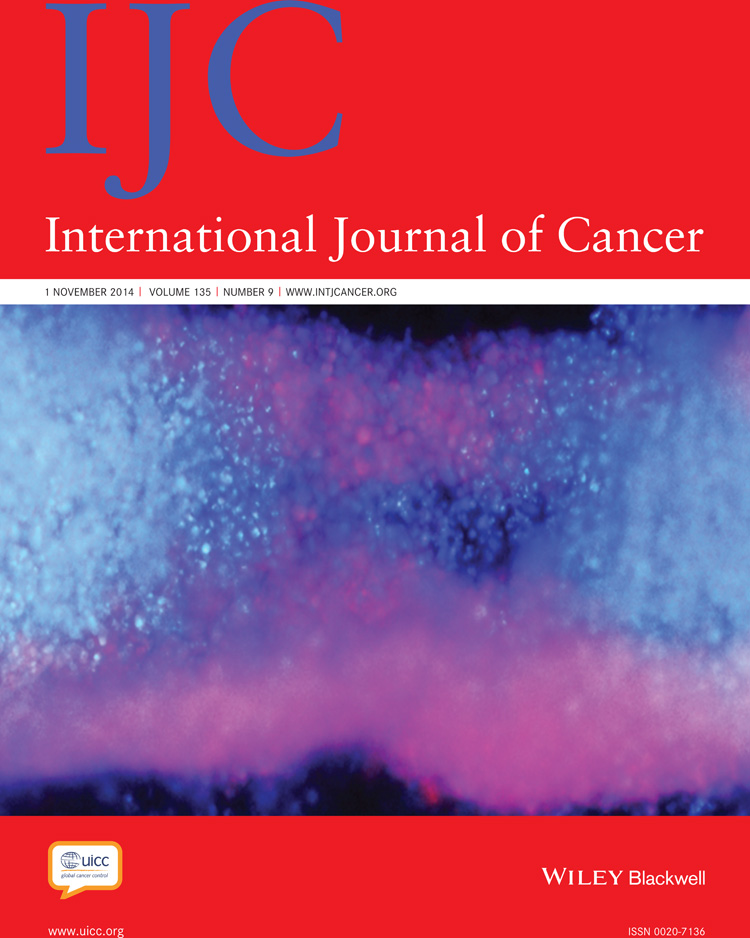Changes in mutational status during third-line treatment for metastatic colorectal cancer—Results of consecutive measurement of cell free DNA, KRAS and BRAF in the plasma
Abstract
KRAS and BRAF mutations are responsible for primary resistance to epidermal growth factor receptor (EGFR) MoAbs in metastatic colorectal cancer (mCRC), but it is unknown what causes wildtype (wt) patients to develop resistance during treatment. We measured circulating free DNA (cfDNA), KRAS and BRAF in plasma and report the changes during third line treatment with cetuximab and irinotecan. One-hundred-and-eight patients received irinotecan 350 mg/m2 q3w and weekly cetuximab (250 mg/m2) until progression (RECIST) or unacceptable toxicity. cfDNA and number of mutated KRAS/BRAF alleles in plasma at baseline and before each cycle was analyzed by an in-house qPCR. cfDNA and pKRAS levels decreased from baseline to cycle three and increased at time of progression (p = 0.008). The decrease was larger in responding patients than in non-responding (p < 0.05). Two patients with primary mutant disease had different types of mutations detected in the plasma, including synchronous KRAS and BRAF. Twelve patients had a primary KRAS mutant tumor, but wild-type disease according to baseline plasma analysis, eight of these obtained stabilization of disease. In five patients with primary wt disease a mutation appeared in plasma before radiological evidence of progression. Loss of mutations may explain observed benefit of treatment in primary mutant disease, whereas appearance of mutations during therapy may be responsible for acquired resistance in primary wt disease. Benefit from EGFR MoAbs may be influenced by the quantitative level of mutational alleles rather than by mutational status alone, and plasma levels of cfDNA, KRAS and BRAF could be used to monitor patients during treatment.
Abstract
What's new?
Mutations in the genes KRAS and BRAF contribute to chemotherapy resistance, but people whose primary tumors lack those mutations also develop resistance. Could there be a way to determine when resistance sets in, to avoid continuing an ineffective treatment? In this study, the authors sampled circulating free DNA, looking for mutations before and during treatment. They detected KRAS mutations popping up in patients who had wild-type tumors, and these mutations heralded a turn for the worse in disease progression. Similarly, some patients had tumors that contained the mutation, but wild-type KRAS in their plasma, and these patients responded better to treatment. Thus, circulating DNA might provide a useful indicator for how well the treatment is working.




